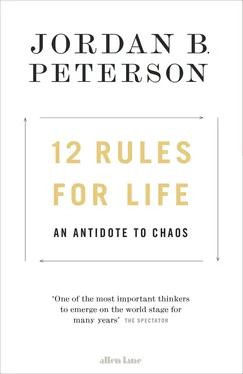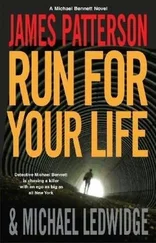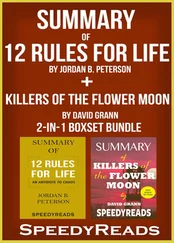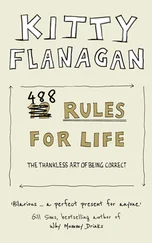She suggested that I write a guide of sorts to what a person needs “to live well”—whatever that might mean. I thought immediately about my Quora list. I had in the meantime written some further thoughts about of the rules I had posted. People had responded positively toward those new ideas, as well. It seemed to me, therefore, that there might be a nice fit between the Quora list and my new agent’s ideas. So, I sent her the list. She liked it.
At about the same time, a friend and former student of mine—the novelist and screenwriter Gregg Hurwitz—was considering a new book, which would become the bestselling thriller Orphan X . He liked the rules, too. He had Mia, the book’s female lead, post a selection of them, one by one, on her fridge, at points in the story where they seemed apropos. That was another piece of evidence supporting my supposition of their attractiveness. I suggested to my agent that I write a brief chapter on each of the rules. She agreed, so I wrote a book proposal suggesting as much. When I started writing the actual chapters, however, they weren’t at all brief. I had much more to say about each rule than I originally envisioned.
This was partly because I had spent a very long time researching my first book: studying history, mythology, neuroscience, psychoanalysis, child psychology, poetry, and large sections of the Bible. I read and perhaps even understood much of Milton’s Paradise Lost , Goethe’s Faust and Dante’s Inferno . I integrated all of that, for better or worse, trying to address a perplexing problem: the reason or reasons for the nuclear standoff of the Cold War. I couldn’t understand how belief systems could be so important to people that they were willing to risk the destruction of the world to protect them. I came to realize that shared belief systems made people intelligible to one another—and that the systems weren’t just about belief.
People who live by the same code are rendered mutually predictable to one another. They act in keeping with each other’s expectations and desires. They can cooperate. They can even compete peacefully, because everyone knows what to expect from everyone else. A shared belief system, partly psychological, partly acted out, simplifies everyone—in their own eyes, and in the eyes of others. Shared beliefs simplify the world, as well, because people who know what to expect from one another can act together to tame the world. There is perhaps nothing more important than the maintenance of this organization—this simplification. If it’s threatened, the great ship of state rocks.
It isn’t precisely that people will fight for what they believe. They will fight, instead, to maintain the match between what they believe, what they expect, and what they desire. They will fight to maintain the match between what they expect and how everyone is acting. It is precisely the maintenance of that match that enables everyone to live together peacefully, predictably and productively. It reduces uncertainty and the chaotic mix of intolerable emotions that uncertainty inevitably produces.
Imagine someone betrayed by a trusted lover. The sacred social contract obtaining between the two has been violated. Actions speak louder than words, and an act of betrayal disrupts the fragile and carefully negotiated peace of an intimate relationship. In the aftermath of disloyalty, people are seized by terrible emotions: disgust, contempt (for self and traitor), guilt, anxiety, rage and dread. Conflict is inevitable, sometimes with deadly results. Shared belief systems—shared systems of agreed-upon conduct and expectation—regulate and control all those powerful forces. It’s no wonder that people will fight to protect something that saves them from being possessed by emotions of chaos and terror (and after that from degeneration into strife and combat).
There’s more to it, too. A shared cultural system stabilizes human interaction, but is also a system of value—a hierarchy of value, where some things are given priority and importance and others are not. In the absence of such a system of value, people simply cannot act. In fact, they can’t even perceive, because both action and perception require a goal, and a valid goal is, by necessity, something valued. We experience much of our positive emotion in relation to goals. We are not happy, technically speaking, unless we see ourselves progressing—and the very idea of progression implies value. Worse yet is the fact that the meaning of life without positive value is not simply neutral. Because we are vulnerable and mortal, pain and anxiety are an integral part of human existence. We must have something to set against the suffering that is intrinsic to Being. [11826] I use the term Being (with a capital “B”) in part because of my exposure to the ideas of the 20th-century German philosopher Martin Heidegger. Heidegger tried to distinguish between reality, as conceived objectively, and the totality of human experience (which is his “Being”). Being (with a capital “B”) is what each of us experiences, subjectively, personally and individually, as well as what we each experience jointly with others. As such, it includes emotions, drives, dreams, visions and revelations, as well as our private thoughts and perceptions. Being is also, finally, something that is brought into existence by action, so its nature is to an indeterminate degree a consequence of our decisions and choices—something shaped by our hypothetically free will. Construed in this manner, Being is (1) not something easily and directly reducible to the material and objective and (2) something that most definitely requires its own term, as Heidegger labored for decades to indicate.
We must have the meaning inherent in a profound system of value or the horror of existence rapidly becomes paramount. Then, nihilism beckons, with its hopelessness and despair.
So: no value, no meaning. Between value systems, however, there is the possibility of conflict. We are thus eternally caught between the most diamantine rock and the hardest of places: loss of group-centred belief renders life chaotic, miserable, intolerable; presence of group-centred belief makes conflict with other groups inevitable. In the West, we have been withdrawing from our tradition-, religion- and even nation-centred cultures, partly to decrease the danger of group conflict. But we are increasingly falling prey to the desperation of meaninglessness, and that is no improvement at all.
While writing Maps of Meaning , I was (also) driven by the realization that we can no longer afford conflict—certainly not on the scale of the world conflagrations of the twentieth century. Our technologies of destruction have become too powerful. The potential consequences of war are literally apocalyptic. But we cannot simply abandon our systems of value, our beliefs, our cultures, either. I agonized over this apparently intractable problem for months. Was there a third way, invisible to me? I dreamt one night during this period that I was suspended in mid-air, clinging to a chandelier, many stories above the ground, directly under the dome of a massive cathedral. The people on the floor below were distant and tiny. There was a great expanse between me and any wall—and even the peak of the dome itself.
I have learned to pay attention to dreams, not least because of my training as a clinical psychologist. Dreams shed light on the dim places where reason itself has yet to voyage. I have studied Christianity a fair bit, too (more than other religious traditions, although I am always trying to redress this lack). Like others, therefore, I must and do draw more from what I do know than from what I do not. I knew that cathedrals were constructed in the shape of a cross, and that the point under the dome was the centre of the cross. I knew that the cross was simultaneously, the point of greatest suffering, the point of death and transformation, and the symbolic centre of the world. That was not somewhere I wanted to be. I managed to get down, out of the heights—out of the symbolic sky—back to safe, familiar, anonymous ground. I don’t know how. Then, still in my dream, I returned to my bedroom and my bed and tried to return to sleep and the peace of unconsciousness. As I relaxed, however, I could feel my body transported. A great wind was dissolving me, preparing to propel me back to the cathedral, to place me once again at that central point. There was no escape. It was a true nightmare. I forced myself awake. The curtains behind me were blowing in over my pillows. Half asleep, I looked at the foot of the bed. I saw the great cathedral doors. I shook myself completely awake and they disappeared.
Читать дальше












